https://www.philahomeopathy.com/dandruff/
Treatment of seborrheic dermatitis in western medicine is always palliative.
Your GP may refer you to a dermatologist if your seborrheic dermatitis
- Is severe
- Covers many areas of your body
- Doesn’t respond to normal treatments
A dermatologist may prescribe antifungal tablets if your rash is very widespread.
There’s no permanent cure for seborrheic dermatitis in western medicine, but known modalities for the treatment of seborrheic dermatitis can improve and temporarily clear your symptoms. Be aware that symptoms of seborrheic dermatitis may well come back when you stop using the treatment.
All modalities used for treatment for seborrheic dermatitis aim to reduce inflammation and diminish the amount of Malassezia yeast on your skin.
However, note that the approach to the treatment of seborrheic dermatitis depends on your age and the location of the symptoms.
Treatment for seborrheic dermatitis on the scalp
If you have scalp seborrheic dermatitis, your pharmacist or GP will probably recommend that you try one of the following treatments.
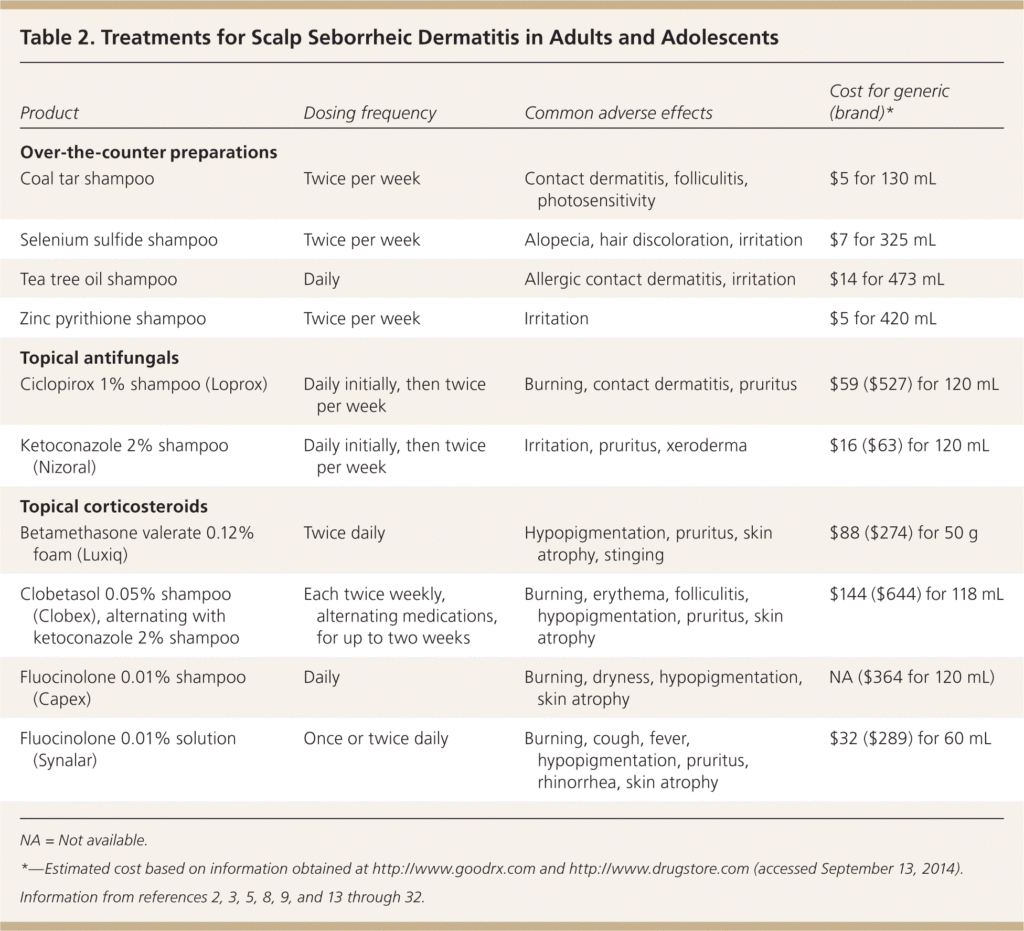
Medicated anti-dandruff shampoos that contain ingredients such as ketoconazole, selenium, coal tar, zinc pyrithione, or salicylic acid. You can buy these shampoos from a pharmacy. In some cases, your GP may be able to prescribe them for you. See our FAQs for more information on how to use these shampoos.
Corticosteroid gels or lotions. These are recommended if you have severe inflammation, itching, and flaking. You should only use them for short periods unless you have specific advice from your GP.
If your seborrheic dermatitis keeps coming back, your GP may recommend that you carry on using an antifungal cream or shampoo once a week or once every two weeks.
If your baby has a cradle cap, see our section on self-help for tips on how to treat it yourself. Your GP may also prescribe a medicated shampoo if your baby has a cradle cap that doesn’t clear up by itself.
Treatment for seborrheic dermatitis on the face
Your GP may prescribe the following treatments for seborrheic dermatitis on the face.
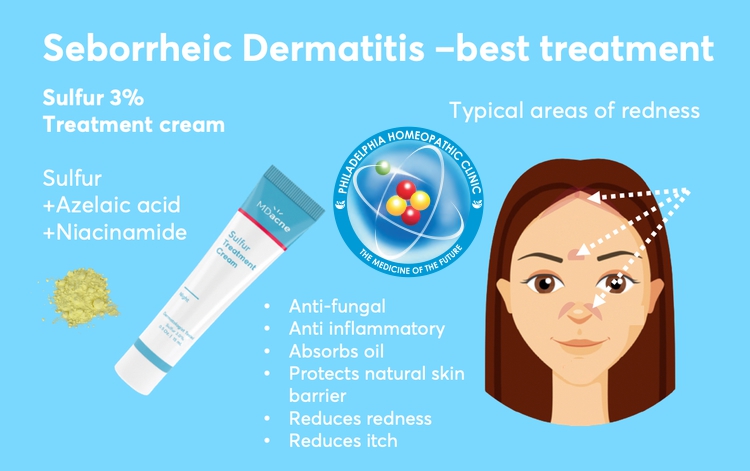
An antifungal cream containing ketoconazole or another antifungal agent. It can take up to four weeks of using these treatments daily for your symptoms to get better. Or your doctor may suggest you use an antifungal shampoo as a body wash.
If your ears are affected, your GP may prescribe medicated eardrops.
A corticosteroid cream to reduce inflammation. You may be prescribed this together with an antifungal agent for one or two weeks.
There is no best treatment for seborrheic dermatitis on face. Each form of treatment for seborrheic dermatitis on face aims to reduce the dryness or oil of the skin of the face and thus diminish the number of flakes.
What is seborrheic dermatitis?
Seborrheic dermatitis is a common skin condition that causes redness, scaly patches, and dandruff. Seborrheic dermatitis is a chronic form of eczema and most often affects the scalp, but can also develop in oily areas of the body, like the face, upper chest, and back.
When infants develop this condition, it’s known as crib cap. It typically develops within the first few weeks after birth and gradually disappears over several weeks or months.
In this article, we’ll talk more about what is seborrheic dermatitis, its symptoms, causes, and different treatment options.
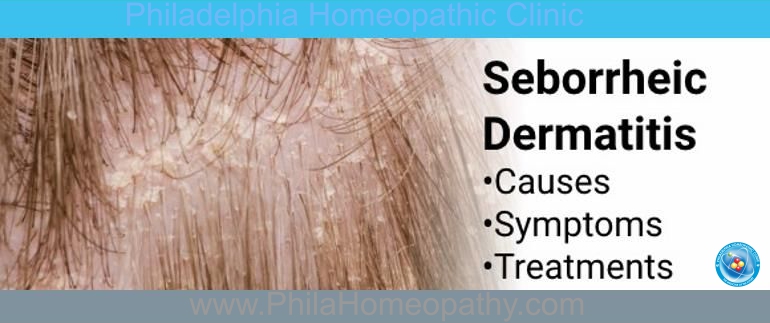
Seborrheic dermatitis is a common skin condition. It affects the scalp, face, or inside the ear. The affected areas have white to yellowish flakes. The skin is also red and greasy. When adults get it on their scalp, it’s commonly called “dandruff.
In babies, it is known as the “cradle cap.” Seborrheic dermatitis can appear on other parts of the body. This includes the chest, creases of the arms, legs, and groin. Seborrheic dermatitis is common in babies younger than three months of age and in adults. In adults. It’s more likely to affect adult men than women.
The term dandruff is commonly used when symptoms of seborrheic dermatitis are mild and restricted to the scalp area. Seborrheic dermatitis is usually reserved for more severe symptoms and/or symptoms are present in other areas of the body.
Dandruff is a very annoying condition, and while it does not pose any threat to an individual’s health, it can make one feel self-conscious.
Dandruff is a skin exfoliation condition that causes white and yellow flaky dry scales on the scalp. There are millions of people all over the world who suffer from this condition. Some forms of yeast that grow on a scalp cause the development of dandruff.
What are the causes of seborrhea?
One of the frequently asked questions on the internet is what are the causes of seborrheic dermatitis? Doctors don’t know the exact causes of seborrheic dermatitis.
The causes of seborrheic dermatitis may be different in babies and adults. It may run in families. One of the many causes of seborrheic dermatitis is hormonal disbalance. It usually appears in babies and disappears before puberty. Other causes of seborrheic dermatitis may be directly or secondary related to a fungus infection. The fungus is called Malassezia. It is present on the skin in small numbers. Sometimes the numbers increase and lead to skin problems.
Seborrheic dermatitis has been linked to neurologic disorders. This includes Parkinson’s disease, epilepsy, traumatic brain injury, and stroke. Doctors do not know why. Below are other possible causes of seborrheic dermatitis:
- Oil gland activity
- Changes in your skin’s barrier function
- Weather extremes
- Stress or fatigue
- Heavy alcohol use
- Lotions that contain alcohol
- Obesity
- Having HIV/Aids
Facts about seborrhea
- Seborrheic dermatitis is probably the single most common inflammatory skin condition affecting humans aside from acne vulgaris.
- Seborrheic dermatitis is highly treatable but incurable.
- The course of seborrheic dermatitis is characterized by spontaneous remissions and exacerbations (flare-ups).
- Seborrheic dermatitis affects all ages.
Symptoms of seborrheic dermatitis
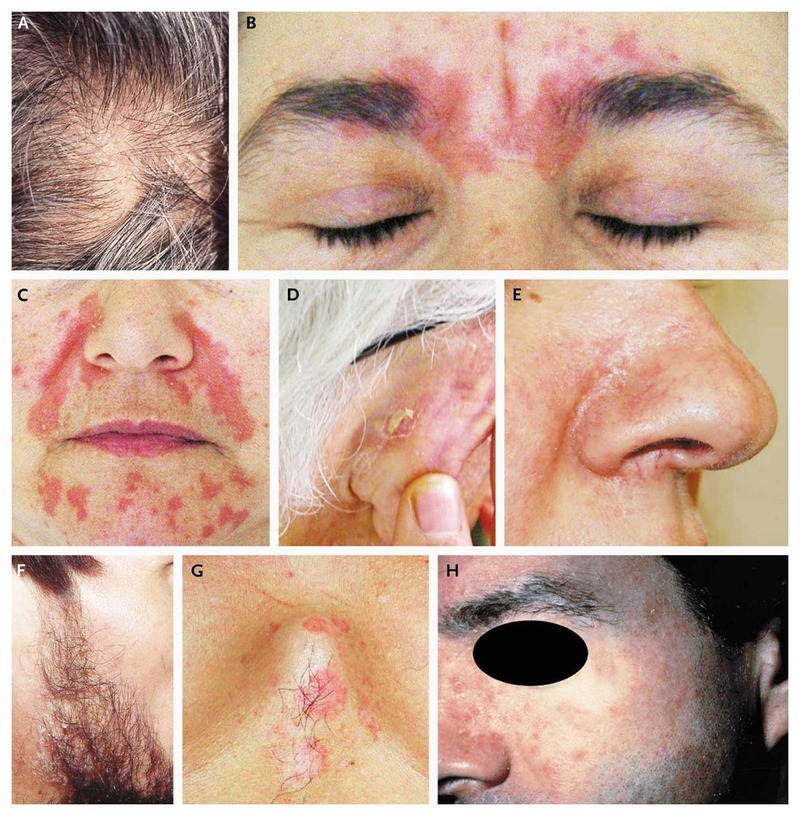
The symptoms of seborrheic dermatitis are:
- White to yellowish flakes of skin
- Red skin (in some cases)
- Greasy or oily skin
- Itching
- Hair loss
Can seborrheic dermatitis be prevented or avoided?
If the condition is genetic, it cannot be prevented. Most other causes cannot be prevented. However, you can reduce the severity of symptoms. Controlling risk factors and careful skincare can help. This includes avoiding lotions that contain alcohol, using special skin products recommended by your doctor, protecting yourself from HIV/AIDs, losing weight, and getting plenty of rest.
Topical calcineurin inhibitors. These include tacrolimus ointment and pimecrolimus cream. Your doctor may prescribe these if you need long-term treatment for inflammation, to avoid the side-effect of skin thinning you might get from corticosteroids.
Living with seborrheic dermatitis
Seborrheic dermatitis is considered chronic. Also, it is a life-long condition. It comes and goes, and it can be controlled with treatment. The negative effects of living with the condition are additional fungal infections and emotional distress. Most people who live with seborrheic dermatitis feel embarrassed and have low self-esteem.
Questions to ask your doctor about the prevention and treatment of seborrheic dermatitis and dandruff
- Will adult products harm a baby with the condition?
- Can wearing a hat help?
- Is seborrheic dermatitis a sign of another disease?
- Is hair loss a common symptom?
Dandruff is a very irritating condition, and while it does not pose any threat to an individual’s health condition, it can make one feels self-unconscious.
Dandruff is a skin exfoliation condition that causes white and yellow flaky scales on the scalp. There are millions of people all over the world who suffer from this condition. Some forms of yeast that grow on a scalp cause the development of dandruff.
New discoveries about dandruff and seborrheic dermatitis
There also seems to be a growth of a fungus called Malassezia. This fungus appears to be present in most scalps that are contaminated with pityriasis, and this is a discovery that is going to help find better ways to cure it. Many experts and researchers have attributed skin exfoliation to excessively dry skin, but in other cases, the cause seems to be oily skin instead. Many hair products seem to cause this condition too, and this is why some doctors recommend that people use natural shampoo as often as possible.
Many experts and researchers have attributed skin exfoliation to excessively dry skin, but in other cases, the cause seems to be oily skin instead. Many hair products seem to cause this condition too, and this is why some doctors recommend that people use natural shampoo as often as possible.
Some other factors that can contribute to this problem include poor hygiene, lack of rest, stress, cold weather, high amounts of sugar consumption, blow dryers, and general health issues amongst others. There are also studies that indicate that dandruff might be related to hormonal imbalances problems too.
Symptoms of dandruff
Some common symptoms are often associated with dandruff, and they include white oily flakes on the scalp and shoulders. Flakes often accompany an itchy sensation in the scalp that might be either too dry or too oily. These are the symptoms that most people experience when they suffer from this condition.
Treatments for Dandruff
The most conventional treatments for dandruff include shampoos that use Zinc Pyrithione. Zinc Pyrithione is an excellent antibacterial and antifungal that is meant to help control the condition with daily use. There are some cases in which dermatologists recommend Tar based shampoos especially if psoriasis and severe dermatitis are involved.
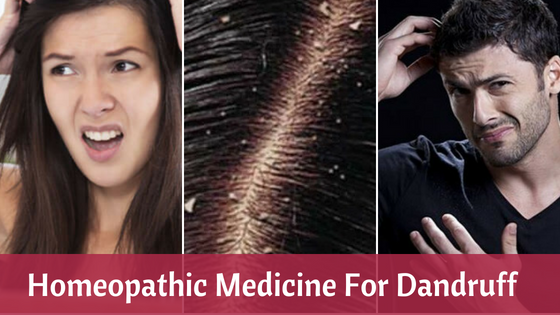
In many cases, salicylic acid plays a significant role in the treatment process, and some specialists have found that this is the best way to get rid of any condition related to dandruff and Selenium Sulfide-based shampoos are also up on that list as the best choices for reducing Malassezia in many patients. The ketoconazole solutions using in some shampoo presentations seem to have a very powerful effect on the bacteria that is usually going to cause this kind of condition.
Homeopathic options the treatment of dandruff and seborrheic dermatitis.
There are some homeopathic options that you might want to consider, and they will often provide excellent results too. Natrum muriaticum, thuja, baryta carbonica, sepia, alumina, Sanicula aqua, and magnesium are amongst the best options you can find for this purpose.
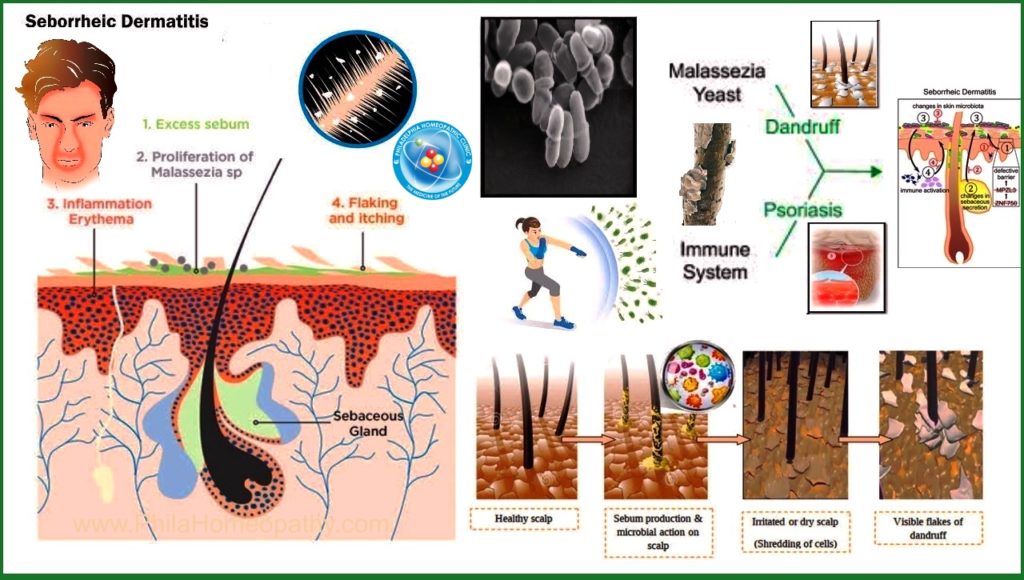
1. Kali Sulphuricum is a homeopathic remedy that is commonly used for dandruff that manifests with yellow scales.
Kali Sulphuricum is a top-quality medicine for the treatment of seborrheic dermatitis. It heals wonderfully in cases when the main symptom of seborrheic dermatitis is prominent yellow flakes on the scalp. The flakes are sticky with a clammy scalp. It is accompanied by itching. Heat makes itching worse in some cases.
2. Thuja Occidentalis – is great for the treatment of white flakes on the scalp
Thuja Occidentalis is medicine well indicated for seborrheic dermatitis with white scales on the scalp. Hair can be dry in such cases. In some cases, split ends and hair loss may be observed.
3. Graphites Naturalis – used when skin scales are accompanied by intense itching
Graphites are a highly effective homeopathic remedy for seborrheic dermatitis in those cases when the flakes on the scalp are going together with intense itching. The scales diminish after head washing but then reappear. A fetid odor may also be observed on the scalp. The scalp can also remain moist and moist. Hair dulling or hair loss is also observed. In addition to the scalp, scales may also be present on the edges of the eyelids and behind the ears.
4. Natrum muriaticum – For oily skin
Natrum muriaticum is one of the most effective homeopathic remedies that are effective for the treatment of seborrheic dermatitis with an oily scalp along with redness and flaking. The scalp is covered with white dandruff. There may also be a burning sensation on the scalp. The face is greasy and oily with redness. Acne on the face can also be present along with the above symptoms.
Home remedies for dandruff – the most common form of treatment for dandruff
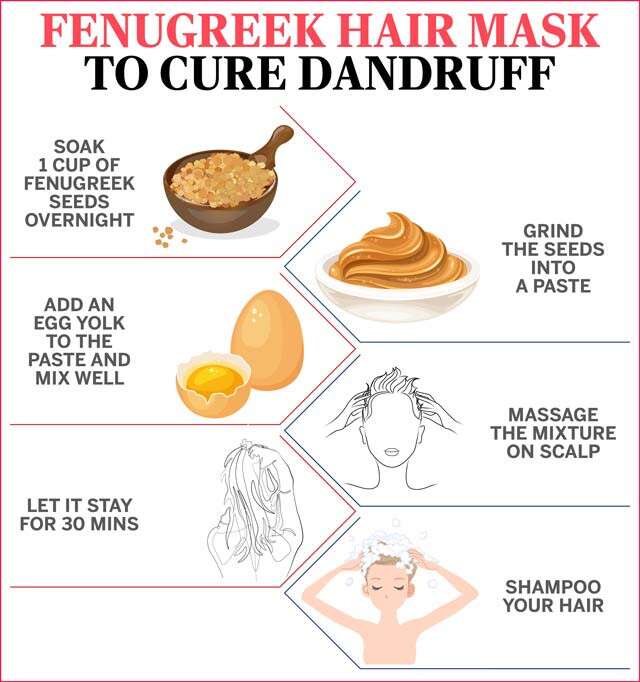
Many people claim the stress levels are a great contributor to the development of pityriasis, and this is the main reason why you need to consider stress to be an important condition to avoid. Keep the stress levels low and you will see how it affects your dandruff problem positively.
Massaging your scalp is also useful, but make sure you do it gently. You can do it while you shower and apply shampoo to save time. You should also brush your hair daily, and this is going to help improve your blood circulation.
Keeping a balanced diet and maintaining a healthy lifestyle will also contribute to the solution to this problem. The are many benefits to eating healthy and exercising, and this is one of them.

Dandruff and treatment for seborrheic dermatitis in Philadelphia
At Philadelphia Homeopathic Clinic internationally recognized homeopaths, doctor Tsan, and associates deliver natural treatment for the main cause of seborrheic dermatitis such as pityriasis, using the most effective holistic techniques – acupuncture, homeopathy, herbal medicine.
If you are looking for dandruff treatment, contact our clinic to schedule the initial homeopathic evaluation.
You can also scan the QR below and book your appointment using our secure scheduling application.

Comments
Post a Comment